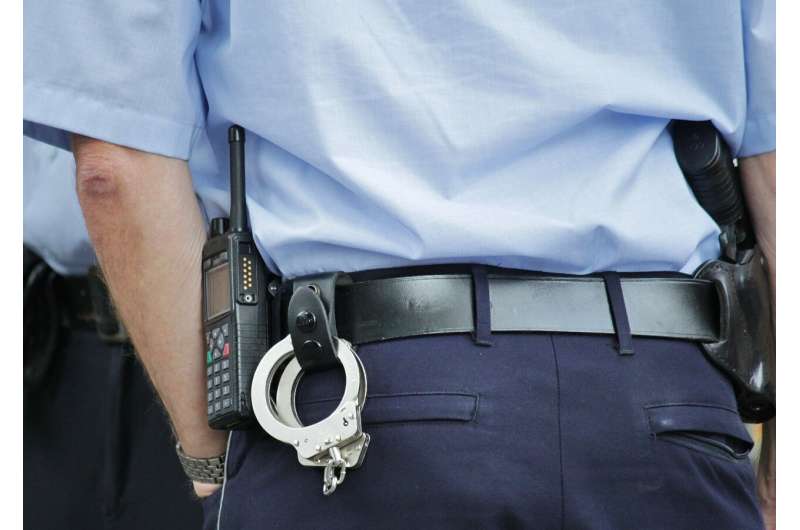
Police staff who have to analyze and categorize images of child sexual abuse cope with the trauma associated with their work by developing informal ways to support each other, research shows.
Being able to recognize their own distress—and that of colleagues—is crucial to those compiling evidence so sex offenders could be prosecuted, according to the study.
The research, published in the British Journal of Criminology, was carried out by Dana Wilson-Kovacs, Brian Rappert and Lauren Redfern from the University of Exeter. The study was based on 270 hours of ethnographic observation undertaken between 2017 and 2020 in four police forces in England, and 67 semi-structured face-to-face interviews with digital forensic practitioners, police officers and senior managers in four constabularies in England, as well as government representatives and independent expert witnesses. It also examined relevant national policy and internal guidance documents.
In the forces studied, digital forensic examiners are tasked with the extraction and viewing of child sexual abuse material for the purpose of categorisation. At any one time, each of the examiners interviewed had between six and fifteen cases at different levels of completion in their workload, with several new ‘jobs’ waiting in the queue. The demand for digital forensic expertise unfolded on a background of constant fight for organizational resources from budget-strapped forces, fatigue from organizational change and frequent staff turnover.
While automated software is used to identify images, considerable human input is needed to manually double-check the accuracy of the information for false positives and perceived borderline cases (for instance, in relation to the age of victim). Once images were identified by examiners, investigating officers usually undertook their categorisation, with examiners reviewing the results of officers’ categorisation for accuracy. In some cases, officers expressed concern about the possibility of vicarious trauma and could not classify the images. In these instances, examiners carried out the categorisation tasks instead.
Digital forensic examiners were offered bi-annual counseling sessions, a peer-to-peer ‘buddy’ system, regular one-to-one meetings between examiners and team leaders, workload and well-being reviews and quarterly welfare resilience questionnaires. Team leaders also used formal measures to keep track of the number of consecutive traumatic ‘jobs’ each examiner processed, so they could give other assignments if necessary. They were instrumental to monitoring the well-being of their teams.
Those interviewed said the formal counseling provision offered didn’t not help them a great deal with the emotional aspects of categorisation and felt the support was unfocused. Inconsistencies in the service offered little opportunity to build the examiners’ trust, with many examiners reluctant to explain themselves to counselors.
Examiners said it wasn’t possible to foresee what may ‘trigger’ an emotional response and discussed the need to develop a good self-understanding about whether they could ‘handle’ their role. They mitigated the impact of having to categorize horrific materials on a daily basis through a range of approaches, such as using fidget spinners, listening to music, going for a walk with colleagues during lunch breaks, and when possible, trying to limit exposure times to each image or video. They told researchers they rarely mentioned their work in social situations to avoid upset to others and reliving the experience. Helping practitioners to cope with distressing tasks was also the use of dark humor when discussing their own lives with colleagues.
Source: Read Full Article
